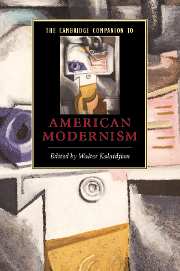2 - Modern American fiction
from Part I - Genre
Published online by Cambridge University Press: 28 May 2006
Summary
Introduction
There is no need for us to quarrel with Alfred Kazin when he writes in the introduction to On Native Grounds (1942) that modern American fiction is “at bottom only the expression” of American life in the late nineteenth and early twentieth century. No one cause or project can be singled out as the defining feature of this diverse body of writing. “Everything,” says Kazin, “contributed to its formation.” Its roots were “nothing less than the transformation of our society in the great seminal years after the War” and its project was ultimately a cognitive one: “the need to learn what the reality of life was in our modern era.”
The social transformation in question has been characterized in many different ways, both before and since Kazin’s day. The historian Warren Susman saw the period as marking a transition from a producer-capitalist culture (with a focus on work, thrift, and self-denial) to a new culture of abundance (with a focus on leisure, spending, and self-fulfillment). This broad shift, he observed, was partly the consequence of new communications media, which affected not only the distribution and circulation of goods and ideas, but altered perceptions of time and place and thereby changed consciousness itself. The novelist John Dos Passos, whose U. S. A. trilogy (1938) is a veritable archive of the technological, political, and linguistic changes that shaped the nation from the turn of the century to the Great Depression, saw these years in terms of the “crystallization” of monopoly capitalism out of an earlier, more individualistic competitive capitalism.
- Type
- Chapter
- Information
- The Cambridge Companion to American Modernism , pp. 39 - 67Publisher: Cambridge University PressPrint publication year: 2005
- 7
- Cited by



